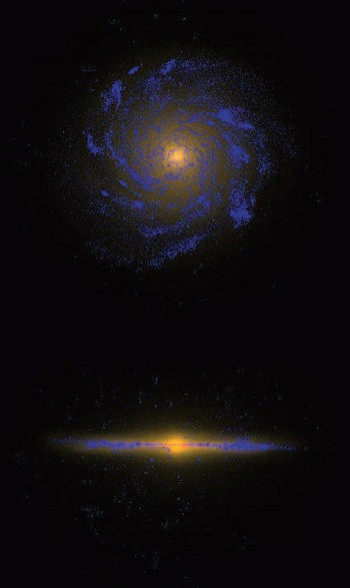Supercomputer Creates First Extra-High Resolution Simulation of Milky Way Galaxy [VIDEO]

Creating a simulation, which approximates the formation of the Milky Way using a powerful supercomputer, was no cakewalk for the researchers at the University of California, Santa Cruz and the Institute for Theoretical Physics in Zurich. After nine months of effort, at the Swiss National Supercomputing Centre in Manno, Switzerland, the first simulation of the formation of the spiral galaxy, Milky Way, was created by the researchers, who claim it would have taken 570 years to build the simulation on a personal computer.
The simulation, Eris, solves a long-standing problem that led some to question the prevailing cosmological model of our universe.
Previous efforts to form a massive disk galaxy like the Milky Way had failed, because the simulated galaxies ended up with huge central bulges compared to the size of the disk, Javiera Guedes, who authored the study, said in a news release.
The Eris galaxy is a large spiral galaxy with a central bar of bright stars and other structural properties consistent with galaxies like the Milky Way. The brightness profile, the bulge-to-disk ratio, and the stellar content of Eris are also all within the range of observations of the Milky Way.
According to co-author, Piero Madau, professor of astronomy and astrophysics at UC Santa Cruz, the project required a large investment of supercomputer time, including 1.4 million processor-hours on NASA's state-of-the-art Pleiades supercomputer, plus additional supporting simulations on supercomputers at UCSC and the Swiss National Supercomputing Center. We took some risk spending a huge amount of supercomputer time to simulate a single galaxy with extra-high resolution, Madau said. Star formation in real galaxies occurs in a clustered fashion, and to reproduce that out of a cosmological simulation is hard.
Gravity acted initially on slight density fluctuations present shortly after the Big Bang, pulling together the first clumps of dark matter, which grew into larger and larger clumps through the hierarchical merging of smaller progenitors. The ordinary matter that forms stars and planets has fallen into the gravitational wells created by large clumps of dark matter, giving rise to galaxies in the centers of dark matter halos.
The simulation follows the interactions of more than 60 million particles of dark matter and gas. A lot of physics goes into the code--gravity and hydrodynamics, star formation and supernova explosions--and this is the highest resolution cosmological simulation ever done this way, said Guedes, who is currently a postdoctoral researcher at the Swiss Federal Institute of Technology in Zurich (ETH Zurich).
Simulation of the Milky Way Galaxy:
© Copyright IBTimes 2024. All rights reserved.






















